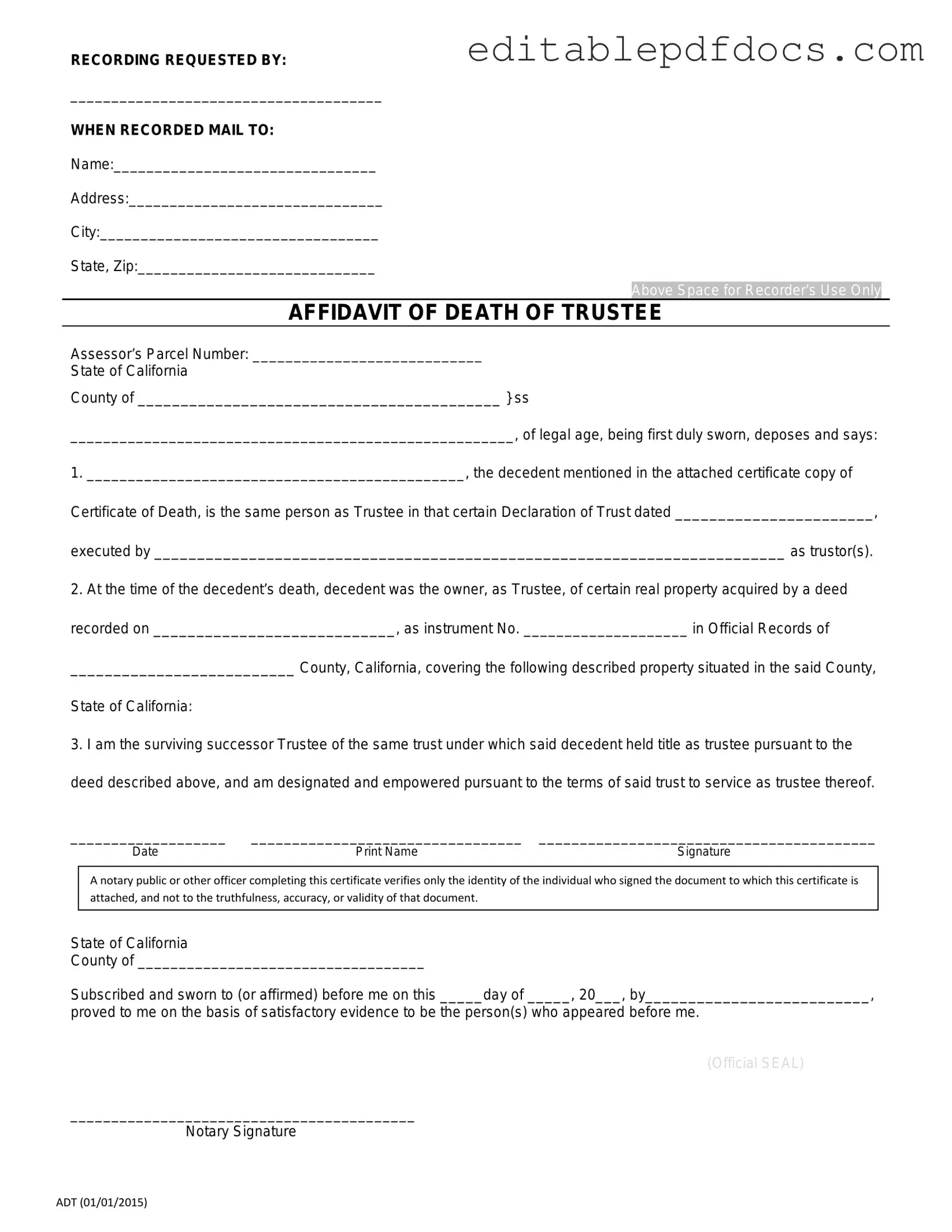Filling out the California Affidavit of Death of a Trustee form can be a straightforward process, but mistakes can lead to delays or complications. One common error is not providing accurate information about the deceased trustee. It's essential to ensure that the name, date of death, and other personal details are correct. Any discrepancies may cause issues in the future.
Another frequent mistake is failing to sign the affidavit. A signature is necessary to validate the document. Without it, the form may be rejected. It’s important to double-check that the signature is present and matches the name listed on the form.
People sometimes overlook the requirement for notarization. The affidavit must be signed in the presence of a notary public. This step is crucial as it adds an extra layer of authenticity to the document. Skipping this step can result in the form being deemed invalid.
Additionally, individuals may forget to include all necessary supporting documents. This can include a copy of the trustee's death certificate. Omitting these documents can delay the process and create unnecessary stress for all involved.
Another mistake involves not clearly stating the powers of the successor trustee. The affidavit should specify what authority the successor trustee has, as this helps prevent confusion later on. Failing to clarify these powers can lead to disputes among beneficiaries.
Some people may also misinterpret the instructions for completing the form. Each section has specific requirements, and misunderstanding these can lead to incomplete or incorrect submissions. It’s beneficial to read the instructions carefully and ask for help if needed.
Lastly, individuals may submit the affidavit to the wrong office or agency. Knowing where to file the document is crucial for ensuring it is processed correctly. Taking the time to verify the appropriate location can save time and effort.
By being aware of these common mistakes, individuals can approach the California Affidavit of Death of a Trustee form with greater confidence. Attention to detail and careful review can help ensure a smoother process during a difficult time.
